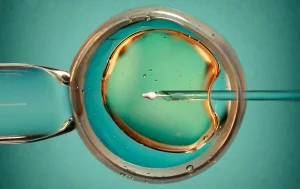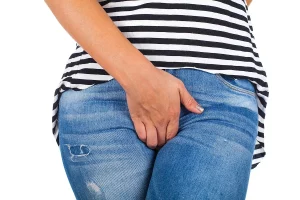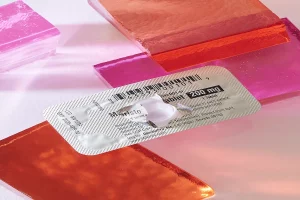Throughout history, women (and men) have been doing various things to maintain and increase their level of beauty. It’s amazing the incredible lengths that some people will go to in order to attain their desired form of beauty, and even more amazing how these beauty ideals vary depending on what part of the world you are in. Take a look at some of these odd beauty practices around the world. Do any of them appeal to you?
Snail Secretions
According to scientific research that was published in The International Society of Skin Pharmacology Journal, snail secretions are said to possess incredible skin regenerative properties that provide protection from free radicals, UV radiation and environmental pollution. Scientists also point out that snails are not known to suffer from the environment around them, even when moving around on the roughest surfaces. In Chile and other parts of the world, many people are getting facials and using skin serums that are made from snail secretions which are said to treat a variety of conditions, from opening clogged pores and treating scars and stretch marks to fighting acne and skin infections.
Fish Feet Exfoliation
It’s as fishy as it sounds. In countries like Japan and Turkey (you may have also seen it on an episode of Keeping Up With the Kardashians), people dip their feet and legs into special pools containing fish that nibble off your dead skin and calluses. Many spas around the world have special inch-long freshwater carp delivered to them from Indonesia specifically for this treatment, although some warn that soaking your feet in public water that these fish deposit their waste products in could result in a bacterial infection. A twenty-five minute session costs around $65 and is often followed by a pedicure.
Leech Detox
Celebrities like Demi Moore have taken to this beauty treatment, which was actually a popular form of medical treatment in the Middle Ages. By allowing leeches to feast on one’s blood, you are supposedly cleansing your body of toxins, getting rid of harmful bacteria, and helping improve circulation of your blood.
Gold Facial
If you’ve got the extra cash to cough up while you’re in China or Japan, you may be curious about trying out this procedure. This pricy procedure is supposed to make you pretty in a jiff, and works by lifting, tightening and lightening skin as well as reducing fine lines and wrinkles. It is also said to slow down the depletion of collagen that results in sagginess, in addition to fading age spots.
Oil Pulling
This traditional folk remedy (also known as oil swishing) involves rinsing one’s mouth with coconut oil or sesame oil for ten to fifteen minutes to pull toxins out of the mouth, reduce plaque and inflammation, as well as brightening one’s smile and removing stains from the teeth. The process works by the oil first mixing with the saliva, turning into a white liquid. Then the oil lipids proceed to extract toxins from the saliva. Once the oil reaches a thick and viscous texture, one must spit it out before the toxins are reabsorbed. It’s even said to have other benefits, such as helping decrease headaches, asthma and acne.
Cuticle Tattoos
Luckily, these aren’t as permanent or painful as they sound – but they sure are strange. The latest trend in nail art, cuticle tattoos are faux tattoos for the cuticle and are used to lengthen and dramatize the look of one’s nail bed. It almost looks like something one would have if they were in an Amazonian tribe… or if they had nowhere else left on their body to tattoo.
Snake Massage
This might even be creepier than snakes on a plane. Apparently there’s a spa in Israel that offers therapeutic snake massages to clients. The spa owner was inspired after catching a snake in one of her plants. She noticed that spa patrons were instantly more relaxed after taking turns holding the snake, so she decided to incorporate the idea into her treatments. A session costs $80 and involves the guest lying down while various snakes crawl around on their skin (apparently the treatment is said to help soothe migraines and sore muscles, even feeling like a cold pack applied against the skin).
Cactus Massage
Found in Mexico, this beauty treatment is supposed to remove toxins from your body and rehydrate your skin. Don’t worry – the massage therapist isn’t going to attack your body with a loose piece of cactus. The treatment involves the application of a warm mixture of cactus – or you can go for the tequila and sage oil massage instead, which sounds a bit tastier.
Nightingale Excrement
Crude but classy, Japanese women have sworn by this method for years. Nightingale dropping masques were actually created back in the day for traditional geishas to treat their skin, which became damaged from the toxic amount of lead and zinc that seeped into their pores from the heavy white makeup they wore on a daily basis. The enzymes in the excrement are said to break down dead skin cells and are rich in guanine, which gives the complexion a rich glow.
Beer Baths
Popular in the Czech Republic, beer baths are offered at select locations, including the Chodovar Family Brewery. Since its inception in 2006, the brewery’s 20-minute beer soak offers guests an opportunity to stimulate their skin and internal organs (rumor has it that Catherine Zeta Jones is also a fan of this beauty procedure). As a bonus, they offer a complimentary glass of beer afterwards.
Face Slapping
Offered at an upscale massage parlor in San Francisco by a Thai masseuse, you can treat yourself to this hands-on beauty procedure. Simple yet supposedly effective, this involves having your face lightly slapped, pinched and manipulated for fifteen minutes or longer. Supposedly the treatment is said to help get rid of wrinkles and shrink pores, although I’d be more concerned about it leaving a mark or two. And this doesn’t come cheap either – for a short session, the average cost is $350. Wouldn’t it make more sense to just get in an argument with your girlfriend or close friend and get her to slap you for free?

















